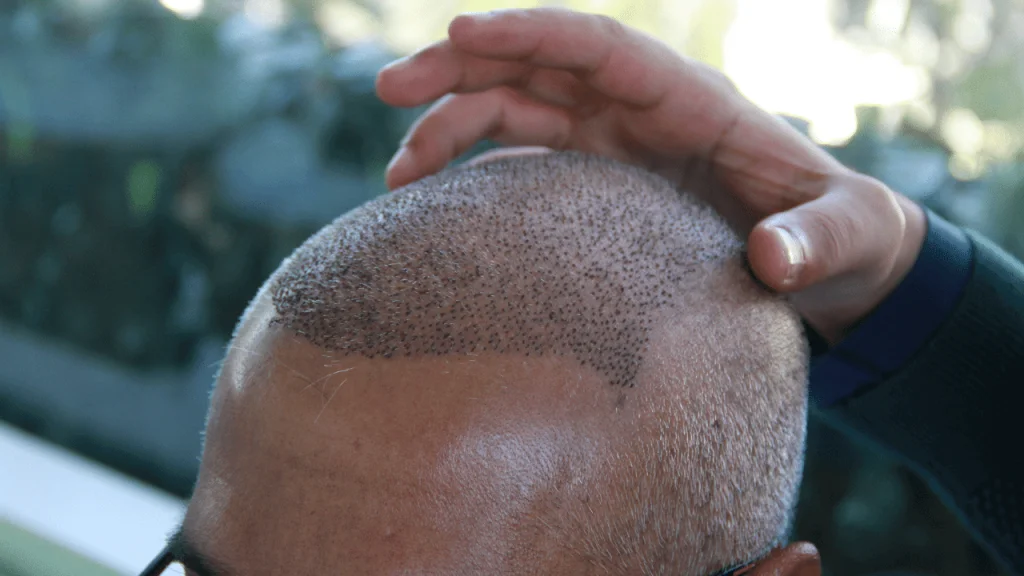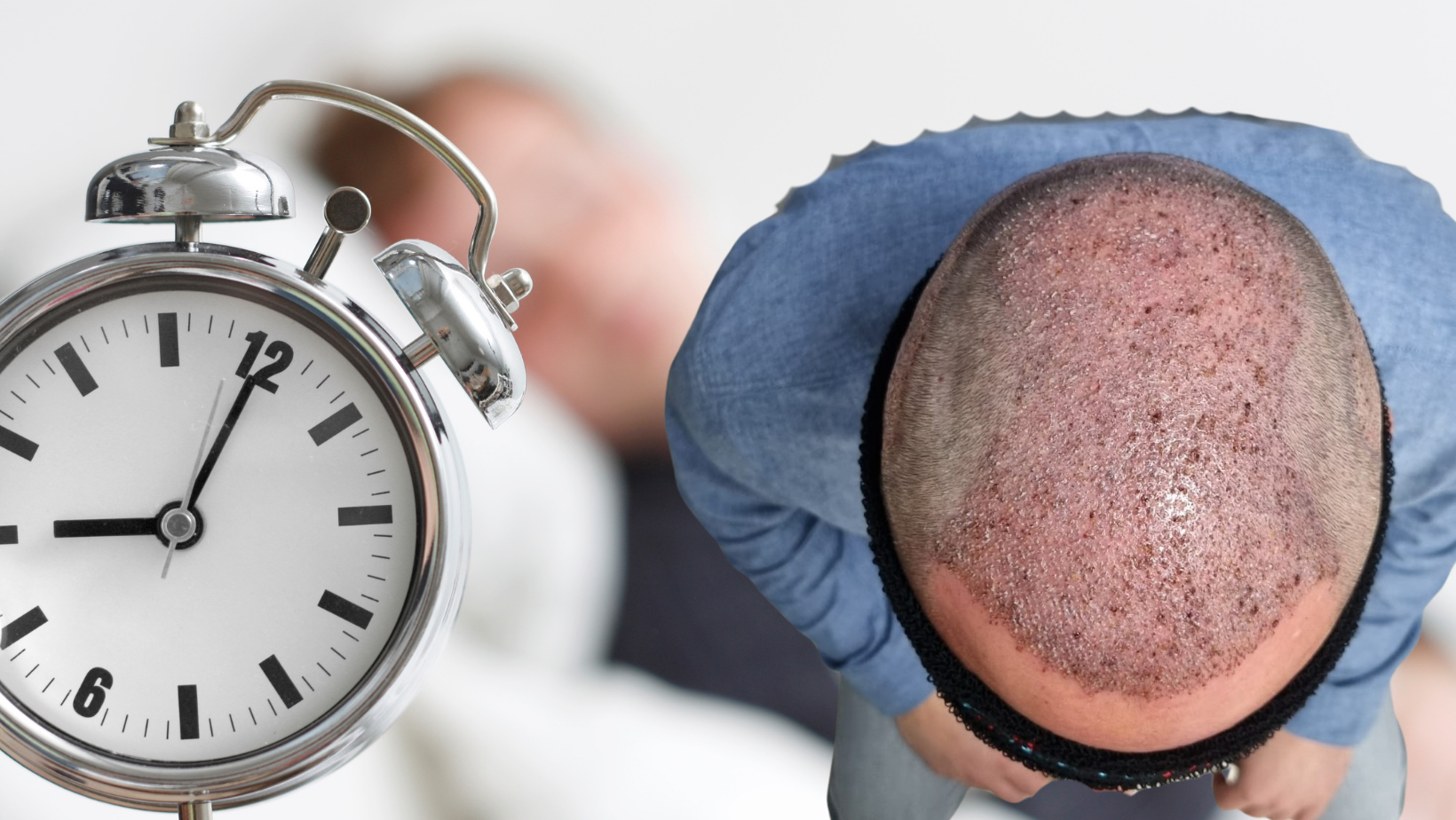Hair transplant surgery is a significant step towards regaining confidence and achieving a fuller head of hair. However, post-operative care, particularly how you sleep, is crucial for ensuring the success of the transplant and promoting faster recovery. This blog will provide detailed guidance on how to sleep after hair transplant, incorporating essential tips and advice to help you navigate the initial days and weeks post-surgery.
Table of Contents
Understanding the Importance of Post-Operative Care
Proper post-operative care is vital for the success of your hair transplant. The newly transplanted grafts are delicate and need time to establish themselves in their new location. Incorrect sleeping positions or habits can dislodge grafts, cause swelling, and potentially lead to infection, jeopardizing the outcome of the procedure.
1. Sleeping Position: Elevate Your Head
One of the most critical aspects of post-hair transplant care is your sleeping position. Elevating your head while sleeping can significantly reduce swelling and prevent complications. Here’s how you can achieve this:
- Use Multiple Pillows: Stack two or three pillows to keep your head elevated at a 30 to 45-degree angle. This elevation helps reduce swelling by promoting proper blood flow and preventing fluid accumulation around the transplant site.
- Invest in a Wedge Pillow: A wedge pillow can provide consistent elevation and support, ensuring that you maintain the correct position throughout the night.
- Avoid Sleeping Flat: Sleeping flat on your back or stomach can increase swelling and pressure on the transplanted area. Always keep your head elevated for the first few days to a week post-surgery.

2. Protecting the Grafts: Avoid Direct Contact
Protecting your newly transplanted grafts from direct contact and friction is essential to prevent dislodgement and ensure successful healing. Here are some tips to safeguard your grafts while sleeping:
- Sleep on Your Back: Sleeping on your back minimizes the risk of rubbing the transplanted area against the pillow or mattress. It also helps maintain the elevation of your head.
- Use a Neck Pillow: A neck pillow can help keep your head in a stable position and prevent you from turning onto your sides during sleep.
- Avoid Tight Headwear: Do not wear tight caps, hats, or any headwear that might press against the grafts while you sleep. Loose, breathable materials are preferable if you need to cover your head.
3. Managing Swelling and Discomfort
Swelling and discomfort are common after a hair transplant. Proper management of these symptoms can enhance your sleep quality and overall recovery experience. Consider the following strategies:
- Apply Cold Compresses: Applying cold compresses to the forehead and around the eyes can help reduce swelling. Be careful not to apply ice directly to the transplant area.
- Stay Hydrated: Drink plenty of water to help your body flush out any excess fluids and reduce swelling.
- Follow Medication Guidelines: Take any prescribed pain relievers and anti-inflammatory medications as directed by your surgeon to manage pain and swelling effectively.
4. Establishing a Comfortable Sleep Environment
Creating a comfortable sleep environment is essential for ensuring restful and uninterrupted sleep. Here are some tips to optimize your sleep environment post-hair transplant:
- Cool and Dark Room: Keep your bedroom cool and dark to promote better sleep. Use blackout curtains and maintain a comfortable temperature.
- Clean Bedding: Ensure that your bedding is clean to reduce the risk of infection. Change pillowcases frequently, especially during the first week post-surgery.
- Avoid Caffeine and Heavy Meals: Avoid consuming caffeine and heavy meals close to bedtime, as these can interfere with your sleep quality.
5. Long-Term Sleep and Care Tips
While the initial days after a hair transplant require more careful attention, long-term care is also crucial for maintaining the results and ensuring the health of your new hair. Here are some long-term tips:
- Gradually Return to Normal Sleeping Positions: After the first week, you can gradually start sleeping in your preferred positions. However, continue to avoid any positions that put pressure on the transplanted area.
- Regular Follow-Ups: Attend all scheduled follow-up appointments with your surgeon to monitor the progress of your recovery and address any concerns.
- Healthy Lifestyle: Maintain a healthy lifestyle, including a balanced diet, regular exercise, and stress management, to support the overall health of your hair and scalp.
FAQs About Sleep After a Hair Transplant
How long should I sleep with my head elevated after a hair transplant?
It is generally recommended to sleep with your head elevated for the first 7-10 days after a hair transplant. Elevating your head at a 30 to 45-degree angle helps reduce swelling and prevents pressure on the newly transplanted grafts. Using multiple pillows or a wedge pillow can help maintain the correct position throughout the night. Always follow your surgeon’s specific instructions for the best results.
Can I sleep on my side after a hair transplant?
In the first few days after your hair transplant, it is crucial to avoid sleeping on your side to protect the transplanted grafts from direct contact and friction. Sleeping on your back with your head elevated is the safest position. After about a week, you can gradually start sleeping on your side, but continue to be cautious and avoid any pressure on the transplant area. Consult your surgeon for personalized advice.
What should I do if I accidentally rub or bump my transplanted area while sleeping?
If you accidentally rub or bump the transplanted area while sleeping, don’t panic. Gently check for any signs of dislodged grafts, such as excessive bleeding or missing grafts. If you notice any issues, contact your surgeon immediately for guidance. It’s normal to experience some minor bumps, but it’s essential to be as careful as possible to protect the grafts during the initial healing period.
How can I reduce swelling after a hair transplant?
Swelling is a common side effect after a hair transplant, but it can be managed with a few strategies:
Sleep with your head elevated: Keeping your head elevated at a 30 to 45-degree angle helps reduce swelling.
Apply cold compresses: Use cold compresses on your forehead and around your eyes (but not directly on the transplanted area) to minimize swelling.
Stay hydrated: Drink plenty of water to help your body reduce fluid retention.
Follow medication guidelines: Take any prescribed anti-inflammatory medications as directed by your surgeon.
Avoid strenuous activities:1 Refrain from heavy physical activities that could increase blood flow to your head and exacerbate swelling.
When can I resume my normal sleeping habits after a hair transplant?
You can typically start resuming your normal sleeping habits about 7-10 days after the hair transplant, provided that there are no complications and your surgeon approves. It’s important to continue being cautious and avoid any sleeping positions that put pressure on the transplanted area. Gradually transitioning back to your preferred sleeping positions will help ensure the best healing environment for your new hair grafts. Always follow your surgeon’s specific recovery plan for the best outcomes.
Conclusion
Sleeping properly after a hair transplant is crucial for ensuring the success of the procedure and promoting a smooth recovery. By following the tips outlined in this blog, you can protect your newly transplanted grafts, reduce swelling, and create a comfortable sleep environment that supports healing. Remember to adhere to your surgeon’s specific instructions and guidelines, and don’t hesitate to reach out to them with any questions or concerns during your recovery journey.

